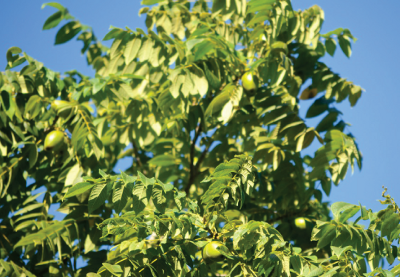Butternut Tree (White Walnut) (Juglans cinerea)
Category: Fruit & Nut Trees

Butternut tree is also known as the oil nut or white walnut tree. Its botanical name is juglans cinerea. The tree is considered to be among the hardest of all the nut trees. It establish well in well drained soils found around stream banks and hill sides which are found in the mixed hard wood forests. The butternut tree can grow to a height of approximately forty to sixty feet from the ground surface. After maturity, the tree can live only up to the age of seventy five. The tree is very important as it is valued for its nuts. However, it also produces lumber.
Butter nut tree has huge buds which are covered with few pale pubescent scales. Its pinnate, alternate, compound leaves grow to a height of about fifteen to twenty five inches long. The leaves have scars which are three lobed and a tuft above it. Its leaflets which are oblong- lanceolate with serrate margins can grow eleven to seventeen inches wide. The tree has a well developed terminal leaflet which has a green color above with a parlor color underneath. Its twigs are pubescent and stout with grey to yellow brown colors. It bears tender, rich, sweet nuts which are edible by both man and animals. The butter nut tree upon maturity can produce very attractive light golden wood which can be used for paneling and furniture, novelties and cabinet work.
The butter nut tree establish well in hardy zones of three to eight with full sun. The tree plant is easily grown. However, it requires to be transplanted early enough due to its rapid developing root system. It has its origin from southeastern New Brunswick stretching to the entire states of New England except for Cape Cod and the northwest areas of Maine. It can also be found in area such as western Maryland, North Carolina, northern Alabama, Virginia, New Jersey, Arkansas and Mississippi. This tree can also be found in central Iowa and Minnesota, Michigan, Wisconsin, Quebec and Ontario.

 Back To Category Fruit & Nut Trees
Back To Category Fruit & Nut Trees